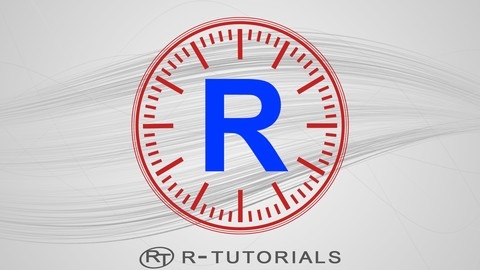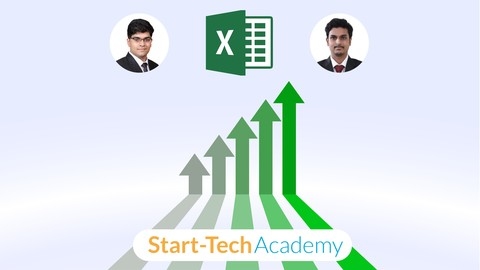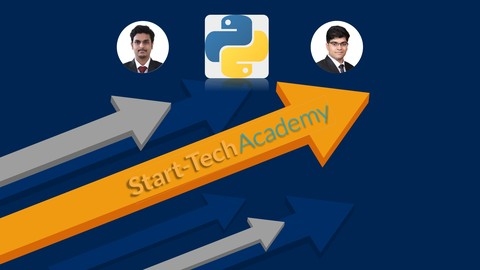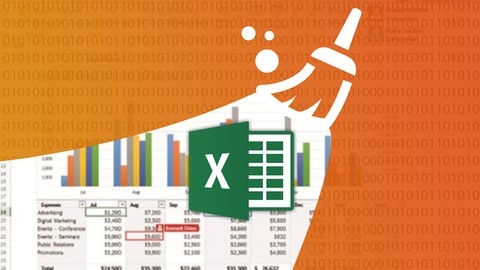Demand planning and sales forecasting are essential for businesses of all sizes to thrive.
By accurately predicting future demand, you can optimize inventory levels, streamline production, and make informed decisions about pricing, marketing, and resource allocation.
Mastering this skill can significantly improve your organization’s efficiency, profitability, and overall success.
Finding the right course to learn forecasting can be a challenge, as there are many options available online.
You’re searching for a program that’s comprehensive, engaging, and taught by experienced professionals, but also fits your specific learning style and goals.
We’ve carefully reviewed numerous Udemy courses and have identified Supply Chain: Demand Planning (Sales Forecasting and S&OP) as the best overall course for mastering demand management and sales forecasting techniques.
This program is packed with valuable insights, practical exercises, and real-world examples that will equip you with the skills to confidently navigate the complexities of forecasting.
While this is our top pick, there are other excellent Udemy courses available that cater to different needs and skill levels.
Keep reading to explore our recommendations for beginner-friendly introductions, advanced courses focusing on specific forecasting techniques, and programs tailored to your career goals.
Supply Chain: Demand Planning (Sales Forecasting and S&OP)
You’ll learn all about demand management and how to build unconstrained demand forecasts.
The course covers the key difference between demand and forecasts, giving you a solid foundation.
One of the standout features is the in-depth coverage of sales forecasting techniques.
You’ll dive into regression analysis, including hands-on exercises to solidify your understanding.
The course also explores exponential smoothing, another essential forecasting method, with practical exercises to apply what you’ve learned.
But it’s not just about the techniques – you’ll also learn how to integrate supply and demand planning, strike the right balance between different forecasts, and understand the importance of rolling forecasts.
The course even includes exercises on calculating forecast accuracy and understanding the significance of different accuracy measures.
Time fence policies, a crucial aspect of demand planning, are covered as well, along with exercises to reinforce the concepts.
And if you ever miss a sales forecast, the course has you covered with strategies to handle that situation.
With a focus on practical exercises and real-world examples, you’ll gain the skills to become a forecasting pro in the area of supply chain.
Introduction to Time Series Analysis and Forecasting in R
You’ll begin with an introduction that sets expectations and covers the basics of time series analysis and forecasting methods.
This section also includes an IT store staff allocation use case to illustrate real-world applications.
Next, you’ll dive into working with dates and times in R, a crucial aspect of time series data.
You’ll learn about different date/time classes like POSIXt, Date, and chron, as well as the powerful lubridate package for date/time manipulation and calculations.
The third section focuses on time series data pre-processing and visualization.
You’ll learn how to create time series objects, import data from various sources, handle missing values and outliers, and visualize time series data using charts and graphs like seasonplots.
Then, you’ll explore the statistical background necessary for time series analysis, including stationarity, unit root tests, autocorrelation functions (acf and pacf), and model comparison techniques.
With this foundation, you’ll move on to time series analysis and forecasting methods.
You’ll learn about quantitative models like seasonal decomposition, simple moving averages, and exponential smoothing.
Qualitative methods like judgmental forecasting are also covered.
A major focus is ARIMA (Autoregressive Integrated Moving Average) models, a powerful tool for time series analysis.
You’ll learn automated and manual ARIMA model selection, parameter identification, forecasting, and incorporating external variables.
The course also covers multivariate time series analysis using techniques like Vector Autoregressive (VAR) models and the Granger causality test.
You’ll gain hands-on experience with the relevant R packages.
Additionally, you’ll explore using neural networks for time series analysis, including autoregressive and multivariate neural network models.
Throughout the course, you’ll work with various datasets and complete exercises to reinforce your learning.
Quizzes are included to test your understanding at key points.
Time Series Analysis, Forecasting, and Machine Learning
You’ll start by understanding the fundamentals of time series, learning about different types of tasks, data transformations, and evaluation metrics.
The course then dives into exponential smoothing techniques like Simple Moving Average (SMA), Exponentially Weighted Moving Average (EWMA), and Holt-Winters methods, with practical applications in areas like sales data and stock predictions.
Next, you’ll explore the powerful ARIMA (Autoregressive Integrated Moving Average) models, covering stationarity, autocorrelation functions, and model selection criteria like AIC and BIC.
The course also covers Vector Autoregression (VAR) models and Granger Causality, essential for multivariate time series analysis.
The machine learning section introduces supervised learning algorithms like linear regression, logistic regression, support vector machines, and random forests for time series forecasting.
You’ll also learn how to use differencing and apply these techniques to real-world scenarios like stock price predictions and sales forecasting.
The deep learning portion covers artificial neural networks (ANNs), including feedforward networks, convolutional neural networks (CNNs), and recurrent neural networks (RNNs) like LSTMs and GRUs.
These powerful models are applied to tasks like human activity recognition and time series forecasting.
Additionally, the course covers advanced topics like GARCH (Generalized Autoregressive Conditional Heteroskedasticity) models for volatility forecasting and cloud-based forecasting services like AWS Forecast and Facebook Prophet.
Throughout the course, you’ll gain hands-on experience with Python libraries like NumPy, Pandas, Matplotlib, and deep learning frameworks like TensorFlow.
The course also provides guidance on setting up your environment, effective learning strategies, and coding tips to help you succeed.
Marketing Analytics: Forecasting Models with Excel
You will learn how to create forecasting models using Excel, starting from the basics of forecasting and data preparation.
The course covers key techniques like linear regression, handling special events like holiday sales, identifying seasonality and trend, and even forecasting for new products using models like the S-curve, logistic curve, Gompertz curve, and Bass Diffusion Model.
One of the highlights is learning multiple regression, where you’ll understand how to include categorical variables and assess model accuracy using metrics like R-squared and RSE.
You’ll also dive into the OLS method and learn to interpret the results.
Special emphasis is given to Excel implementation, with hands-on training on functions, charts, pivot tables, and even the new Analyze Data option for Microsoft 365 users.
The course doesn’t just stop at theory – you’ll get practical experience in data exploration, outlier treatment, missing value imputation, variable transformation, and correlation analysis.
You’ll learn different forecasting models like additive, multiplicative, moving average, and Winter’s method to handle changing trends and seasonality over time.
With quizzes and milestones along the way, you’ll solidify your understanding of concepts like linear regression using Solver, identifying trends and seasonality, and implementing Bass Diffusion Model in Excel.
The course even includes an Excel crash course, ensuring you have the necessary skills to work with data effectively.
Time Series Analysis and Forecasting using Python
You will learn the fundamentals of time series forecasting and gain hands-on experience in Python.
The course starts with an introduction to time series forecasting, its use cases, and the steps involved in creating forecasting models.
You’ll then dive into Python basics, covering arithmetic operations, strings, lists, and popular libraries like NumPy, Pandas, and Seaborn.
This lays the foundation for working with time series data in Python.
One unique aspect is the integration of ChatGPT with Python and Jupyter Notebook, allowing you to leverage the power of natural language processing.
The course covers essential time series concepts like data loading, feature engineering, resampling, visualization, and transformation techniques like moving average and exponential smoothing.
You’ll learn about important concepts like white noise, random walk, and decomposing time series.
Moving on, you’ll explore various forecasting models, including naive (persistence) models, auto-regression models (AR), moving average models (MA), and the widely used ARIMA and SARIMA models.
The course guides you through implementing these models in Python, including walk-forward validation techniques.
Additionally, you’ll learn about linear regression, starting with data preprocessing steps like exploratory data analysis, outlier treatment, missing value imputation, and handling categorical variables.
You’ll then dive into model creation, assessing accuracy, and techniques like test-train split and bias-variance trade-off.
The course also introduces you to artificial neural networks (ANN) and their application in forecasting.
You’ll understand perceptrons, activation functions, gradient descent, and backpropagation.
Using Tensorflow and Keras, you’ll build and train neural network models for both classification and regression problems.
Throughout the course, you’ll have access to additional resources, quizzes, and coding exercises to reinforce your learning.
Budgets, Cashflow Forecasting and Management Accounts
You’ll start with an introduction to budgeting, learning about different budget types and how to prepare and present budgets effectively.
The course even provides an example template to get you started.
Moving on, you’ll dive into project budgets, a crucial aspect of financial planning.
You’ll learn how to create project budget templates and understand the differences between direct, fixed, and variable costs.
Cashflow forecasting is another key focus area.
You’ll learn what a cashflow forecast is, how to create one, input expenses, and calculate the net cashflow.
This is a vital skill for managing your company’s financial health.
Finally, the course covers management accounts and reporting.
You’ll understand how to analyze actual results against budgets and variances, giving you valuable insights into your business’s performance.
Throughout the course, you’ll have access to your tutor for guidance and support.
Financial Budgeting and Forecasting In Excel Complete Course
With instructor Chris Benjamin’s guidance, you will learn to create a robust financial model that incorporates essential components such as assumptions, profit and loss statements, balance sheets, and cash flow statements.
The course begins with an introduction to Excel basics, covering formatting, reports, and charts, ensuring you have a solid foundation.
You will then delve into the core concepts of financial modeling, including terminology and essential Excel functions.
As you progress, you will learn how to develop assumptions for revenue, cost of goods sold, salaries, general and administrative expenses, sales and marketing, and the balance sheet.
These assumptions will serve as the building blocks for your financial statements.
Next, you will construct a detailed profit and loss statement by linking it to the assumptions you’ve created.
Similarly, you will build a balance sheet and a statement of cash flow, tying them together with the profit and loss statement.
The course also covers inventory planning, an essential aspect for businesses selling physical goods.
You will learn how to set up an inventory worksheet and incorporate inventory assumptions into your financial model.
To ensure the accuracy and feasibility of your model, the course guides you through a financial tie-out process, where you will check for errors, review the results, and make necessary adjustments to the assumptions.
Additionally, you will learn how to conduct variance analysis, which allows you to explore best-case and worst-case scenarios, providing valuable insights for decision-making.
Finally, the course culminates with the creation of a financial summary that consolidates the highlights from each financial statement, offering a comprehensive overview of your startup’s financial projections.
Sales Forecasting
This course will provide you with a comprehensive understanding of sales forecasting techniques.
You’ll start by learning the fundamentals of sales forecasting and how to collect relevant data.
The course will then guide you through various forecasting methods, such as moving averages, trend analysis, and regression models.
One key aspect covered is noise cancelation, which helps you filter out irrelevant data and focus on the underlying patterns.
You’ll also learn about tracking and smoothing techniques to enhance forecast accuracy.
The course dedicates sections to understanding trends, correlations, and seasonality, which are crucial factors in sales forecasting.
Practical examples are provided throughout the course, allowing you to apply the concepts to real-world scenarios.
For instance, you’ll learn how to forecast seasonal sales using appropriate methods.
The course also covers advanced topics like using multiple predictor variables and building confidence intervals for your forecasts.
Applied Time Series Analysis and Forecasting with R Projects
The course covers a wide range of time series analysis techniques using R, from basic exponential smoothing models to advanced neural networks.
You’ll start with an introduction to the main R functions used in time series analysis, setting expectations for the course.
Then, you’ll dive into four hands-on projects dealing with different types of data - trending, seasonal, irregularly spaced, and neural network modeling.
In the first project, you’ll work with trending data like the Singapore labor force participation rate.
You’ll learn techniques like the Holt linear trend model, ARIMA, and exponential smoothing, visualizing results with ggplot2.
The second project focuses on seasonal data, using the monthly inflation rates of Germany as an example.
Here, you’ll explore seasonal decomposition, seasonal ARIMA models, and exponential smoothing with ETS models.
Time series cross-validation is also covered.
For irregularly spaced data, like a biotech stock, you’ll scrape data from Yahoo Finance, get it into a regular time series format, and analyze it visually.
Finally, the fourth project dives into neural network modeling for time series forecasting, using interactive Dygraphs for visualization.
You’ll clean the data with tidyr and fit neural net models.
Throughout, you’ll work on real coding projects, importing data, writing scripts with a clear mission, and exploring different forecasting techniques.
The course wraps up with a summary and suggestions for further learning options.
Forecasting Models and Time Series for Business in Python
You’ll start with an introduction to time series forecasting and its importance, setting the stage for the rest of the course.
From there, you’ll dive into popular models like Holt-Winters exponential smoothing, TBATS, ARIMA, and SARIMA.
The course covers key concepts like stationarity, seasonality, and handling exogenous variables.
But it doesn’t stop at traditional methods.
You’ll also explore cutting-edge techniques like TensorFlow’s Structural Time Series models and Facebook’s Prophet library.
The course even touches on ensemble methods, combining multiple models for improved accuracy.
Throughout the course, you’ll work with real-world datasets and learn how to preprocess, visualize, and evaluate your forecasts.
The hands-on approach with Python coding exercises solidifies your understanding.
One standout feature is the inclusion of advanced techniques like XGBoost for forecasting.
By combining Prophet with XGBoost, you’ll learn how to leverage the power of machine learning for time series predictions.










